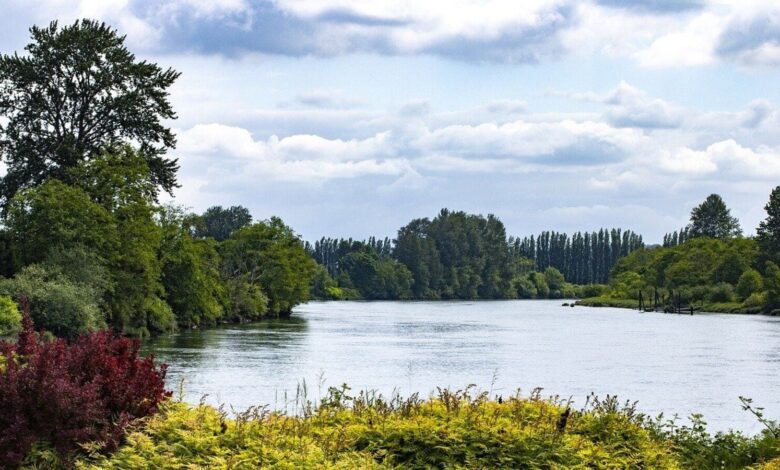India eyes intra-state river linking to combat drought


News
3 min
read
08 Jan 2025, 03:05 PM
IST

Summary
The objective of river-linking is to link surplus rivers with deficient rivers to address the issue of drought and excessive water in a particular region.
NEW DELHI
:
India’s water crisis is a tale of extremes—while some regions battle floods, others face parching droughts.
In a move to address this imbalance, the Centre is expanding its water management strategy by complementing inter-state river-linking with a localized intra-state model. The aim: channel surplus water to drought-prone regions and tackle water scarcity at its roots, two government officials said.
The urgency is stark. Over 60% of India’s 800 districts are classified as high climate risk zones, vulnerable to floods and droughts—two of the country’s most frequent and devastating natural disasters.
A December report by researchers from the Indian Institute of Technology reveals that more than 85% of these high-risk districts are concentrated in 13 states, including Bihar, Assam, and Karnataka, underscoring the scale of the challenge.
A new paradigm
With water being a state subject, the Union government has left it to individual states to identify and propose intra-state river-linking projects, officials said. Meanwhile, progress continues on the ₹44,605 crore Ken-Betwa Link Project (KBLP), India’s first inter-state river-linking initiative.
Also read: Five-year plans back at Niti Aayog, this time to cut emissions
Intra-state river linking will focus on connecting rivers within a single state, such as pairing a perennial river with a monsoonal one. This approach offers a practical solution to localized water management challenges, and the Union ministry is actively encouraging states to explore its feasibility, according to one of the officials cited earlier.
“States cannot presume they have both kinds of rivers within the state. If it is there, then they can go ahead after pre-feasibility and feasibility reports,” the official said.
“The National Water Development Agency (NWDA) has identified some potential links, and some studies have been done in terms of the pre-feasibility. So, wherever the pre-feasibility and feasibility reports indicate a positive signal, the states have to come up with a proposal,” the official added.
NWDA’s role and identified projects
NWDA in its pre-feasibility report identified a few potential intra-state river link projects including Burhi Gandak-Noon-Baya-Ganga in Bihar.
The Burhi Gandak-Noon-Baya-Ganga Link project is poised to bring transformative benefits to the districts of Samastipur, Begusarai, and Khagaria in Bihar. It aims to irrigate 126,000 hectares of agricultural land during the kharif season, generating an estimated annual economic benefit of ₹587.10 crore.
Additionally, the project includes the construction of a barrage across the Burhi Gandak river and a 28.95 km link canal, offering significant flood relief and enhancing water management in the region.
The official also informed that as per the National Prospective Plan (NPP), around 25 odd links for pre-feasibility and feasibility have already been identified by NWDA.
Also read: India eyes seaweed to cut methane-filled bovine burps in climate change fight
The objective of river-linking is to link surplus rivers with deficient rivers to address the issue of drought and excessive water in a particular region.
“We are interested because there are some areas where there is no water, whereas there are some areas which have a profuse amount of water. Economics and other things come afterwards,” the other official said.
Challenges beyond science
Interlinking works effectively when there is a perennial water source to support the system of transferring water from one region to another. Investing heavily in such infrastructure is not viable for short-term solutions.
An alternative could involve linking one reservoir to another, but this approach is only feasible if the reservoir can maintain a steady water supply for two to four years, the second official explained.
The National River Linking Project also provides irrigation facilities for agriculture, helps generate hydro power, and increases the availability of water for drinking and industrial purposes.
“To execute the plan, it requires convincing local public because in general they may not be against it, but when you start doing it the resistance comes,” the second official said, explaining challenges.
Queries sent to the secretary and spokesperson of the water resources department remained unanswered at press time.
Also read: Govt approves ₹1,116 crore for disaster mitigation, capacity building projects
Despite the NWDA being operational since 1982, only one river-link project has been successfully completed to date.
The NWDA has prioritised four projects for early implementation: Ken-Betwa, Kosi-Mechi, Parbati-Kalisindh-Chambal, and Godavari-Cauvery. Among these, the Ken-Betwa River Link Project, first proposed in 1995, finally commenced last month.
When asked about the challenges in executing such projects, the first official said, “The challenges are not scientific but political in nature.”
Catch all the Business News, Market News, Breaking News Events and Latest News Updates on Live Mint.
Download The Mint News App to get Daily Market Updates.



